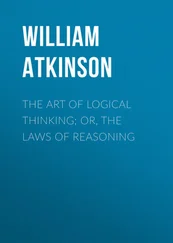Omitting the technical fallacies condemned by the logicians, let us consider the leading fallacies employed as False Argument:
I. Arguing from a true collective to a false particular . As, for instance, to argue that because the Jewish race, as a whole, is distinguished for its keen business perception, that a particular Jew must be a keen business man. The individual Jew may be a very poor business man. Likewise, as Jevons points out: “Ministers sitting in cabinet council will probably come to a wise conclusion concerning an important question; but it does not follow that any one of them would come to a wise decision.” Likewise, while statistics show that the percentage of Quakers in prison is very small compared to the whole number of prisoners, still it does not necessarily follow that all Quakers are honest, or even that the Quakers are any more honest than an equal number of people of any one other religious denomination— there is a very small percentage of Quakers in a community. The use of proverbs often comes under this head, for proverbs are notoriously ambiguous, and while possibly true of the race as a whole are often false of any particular individual.
II. Arguing from uncertain meaning of words or terms . The authorities say “A word or term with two meanings is really two words or two terms.” The following familiar false argument illustrates this point in a humorous way: “A cat must have three tails, because (1) Any cat has one tail more than no cat; (2) No cat has two tails; therefore, (3) Any cat has three tails, because any cat has one tail more than no cat .” In the same way may be argued the ‘truthfulness of a man who makes the statement: “I am telling a lie.” If he is lying , he is telling the truth , because he has said he was lying; if he is telling the truth , he is lying , because he has so asserted. The remedy for this form of false argument is the proper understanding and definition of the words and terms used in the premises of an argument.
III. Arguing a false conclusion . This arises from introducing into the conclusion new matter, or matter not contained in the original premises . For instance the fallacious argument: (1) All men are mortal; (2) Socrates is a man; therefore (3) Socrates is wise. Or, De Morgan’s celebrated illustration: “(1) Episcopacy is of Scripture origin; (2) The Church of England is the only Episcopal church in England; therefore, (3) The church established is the church that ought to be supported.” Or as Jevons says: “The device of the Irishman who was charged with theft on the evidence of three witnesses who had seen him do it; he proposed to call thirty witnesses who had not seen him do it. Equally logical was the defense of the man who was called a materialist, and who replied, ‘I am not a materialist ; I am a barber .’”
IV. Arguing a false cause . Hyslop says: “It consists in arguing from a mere co-existence or sequence, a causal or necessary connection.” It also often arises from a confusion of cause and effect, the latter being mistaken for the former. The old saying was: after a fact, therefore because of it.” Thus the argument that as a pestilence arose after the appearance of a comet, the latter caused the former. Or, that a death of a king following the eclipse of the sun, was therefore caused by the latter. Or, that because cock-crowing is always heard just before the sunrise, therefore cock-crowing is the cause of the sunrise. Or, that because the greater the civilization, the greater the number of high silk hats, therefore high silk hats are the cause of civilization. Or, that because a certain Presidential candidate has been elected, the crops failed. A proper understanding of the rules of Cause and Effect will give one the antidote to this form of false reasoning.
V. Arguing the ignorance of the opponent . This form of false argument consists in claiming that a proposition is correct because the opponent cannot prove the contrary . This is in defiance of the rule regarding the Burden of Proof, and of the Presumption, as explained in a preceding chapter. It is the basest of all arguments, and yet is quite popular with some speakers. A moment’s clear thought should serve to expose the fallacy. As Brooks says: “The fact that we cannot find a needle in the haystack is no proof that it is not there.” A failure to prove an alibi is no proof of the guilt of a person accused of crime, but lawyers agree that nothing so prejudices a jury against a prisoner as the failure to sustain a claimed alibi. As Jevons well says: “No number of failures in attempting to prove a proposition really disprove it,” and equally true is it that no number of failures to disprove a proposition really prove it. It is a favorite trick of some debaters to impudently claim: “I state that so-and-so is true, and you cannot prove that it is not! ” This kind of argument would tend to prove that the moon was made of green cheese, simply because no one could prove that it was not . An understanding and application of the rules of Burden of Proof and of Presumption gives one the key to the situation.
VI. Arguing beside the point . This false argument consists in evading the point at issue. For instance, one asserts that A is a thief , and holds that he has established his proposition by evidence that A is a liar , and that as all thieves are liars, etc., in defiance of the fact that one may be a liar and yet not be a thief, and that, at any rate, A is accused of theft and not of lying. The writer has a personal recollection of a case in which a woman of the demi monde was accused of theft. No evidence whatsoever, direct or circumstantial, was adduced to show her connection with the alleged theft, but the prosecuting attorney tried to introduce extended evidence that the woman was a prostitute, and that as prostitutes often steal, the presumption was that she was a thief, etc. It is needless to say that the court ordered the discharge of the prisoner. We hear arguments of this kind in politics, as for instance, the argument that because a man was a good general, therefore he will make a good president. Or, that because a man is honest he will necessarily prove a good executive. To this class of false arguments belongs that cited by Hyslop as follows: “Church and State are good institutions; therefore, Church and State should be united.” The false argument in this last case is in the assumption that because “Church and State are good institutions ” may be proven, therefore is proven that “Church and State should be united.” The real point to be proven, is either that “ All good institutions should be united,” or else the separate proof that “Church and State should be united.”
VII. Arguing in a Circle . This form of false argument consists in “assuming as proof of a proposition, the proposition itself.” For example the argument: (1) The Demopublican party is honest because it advocates honest principles; and (2) that certain principles are honest because they are advocated by the Demopublican party. Or that: (1) My church is the true church, because it was established by God; and (2) it must have been established by God, because it is the true church.” Another instance is that of the quack physician who informs the father of a dumb girl of the cause of her trouble, as follows: “Nothing is more easy than to explain it, it comes from her having lost the power of speech.” Or the explanation that “We can see through glass, because it is transparent.” Or, “it is warm because it is summer; it is summer because it is warm.” Hyslop says: “The fallacy of reasoning in a circle occurs mostly in long arguments where it can be committed without ready detection. In such cases as are given above, the fallacy is perfectly obvious. But where it occurs in a long discourse it may be committed without easy discovery. It is likely to be occasioned by the use of synonyms which are taken to express more than the conception involved, when they really do not .”
Читать дальше












